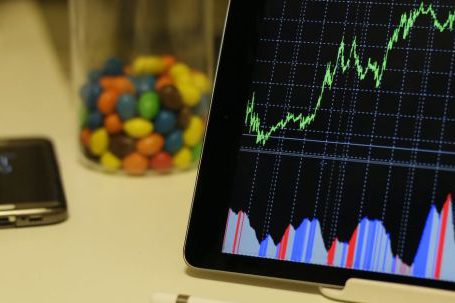Market volatility can be both exhilarating and nerve-wracking for traders. It refers to the rapid and significant price fluctuations that occur in financial markets. Understanding market volatility is crucial for making informed trading decisions. In this article, we will delve into the concept of market volatility, its causes, and strategies to navigate through it.
What is Market Volatility?
Market volatility is a measure of the rate at which the price of a financial instrument or market index changes over time. It reflects the degree of uncertainty or risk in the market. High volatility indicates larger price swings, while low volatility suggests more stability. Traders and investors closely monitor market volatility as it can present opportunities for profit or lead to significant losses.
Causes of Market Volatility
Several factors contribute to market volatility. Economic indicators, such as GDP growth, employment data, and inflation rates, can influence market sentiment and trigger volatility. Geopolitical events, such as elections, wars, or trade disputes, can also shake up markets. Additionally, market volatility can be driven by changes in investor behavior, including panic selling or irrational exuberance.
Strategies for Navigating Market Volatility
1. Diversification
One effective strategy to mitigate the impact of market volatility is diversification. By spreading investments across different asset classes, sectors, and geographic regions, traders can reduce their exposure to any single market. Diversification helps to balance risk and potential returns, providing a buffer against market volatility.
2. Risk Management
Implementing effective risk management techniques is crucial during volatile market conditions. Traders should set stop-loss orders to limit potential losses and protect their capital. Additionally, proper position sizing and portfolio rebalancing can help manage risk exposure. It is essential to have a well-defined risk management plan and stick to it, even in the face of market turbulence.
3. Technical Analysis
Technical analysis is a popular approach used by traders to predict market trends and identify potential trading opportunities. By analyzing historical price patterns, chart formations, and technical indicators, traders can gain insights into market behavior and make informed decisions. Technical analysis can be particularly useful in volatile markets, as it helps identify support and resistance levels and potential trend reversals.
4. Fundamental Analysis
While technical analysis focuses on price patterns, fundamental analysis examines the underlying factors that drive market movements. By analyzing economic data, company financials, and industry trends, traders can assess the intrinsic value of a security or market. Fundamental analysis helps traders make long-term investment decisions based on the underlying fundamentals of an asset, providing a more comprehensive view of market volatility.
5. Patience and Discipline
Perhaps the most important strategy for navigating market volatility is maintaining patience and discipline. Emotional decision-making often leads to poor trading outcomes. It is important to stick to a well-thought-out trading plan and avoid impulsive actions based on short-term market movements. By maintaining a calm and rational approach, traders can avoid unnecessary losses and capitalize on opportunities presented by market volatility.
In conclusion, understanding market volatility is essential for making informed trading decisions. By recognizing the causes of volatility and employing effective strategies, traders can navigate through turbulent market conditions with confidence. Diversification, risk management, technical and fundamental analysis, and maintaining patience and discipline are key elements in successfully trading in volatile markets. By staying informed and adapting to changing market conditions, traders can capitalize on the opportunities presented by market volatility.





